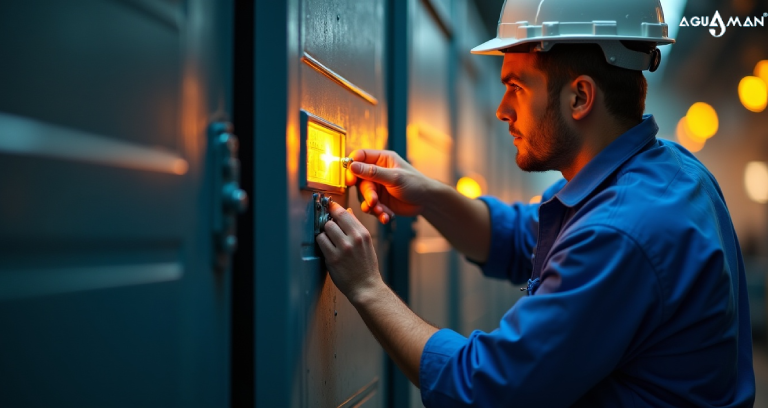What is Chiller Temperature?
Chiller temperature is the setpoint temperature of chilled water (or other fluid) that a system maintains for cooling purposes. In other words, it is the temperature of the water exiting the chiller and absorbing heat from a building, piece of equipment, or storage unit. The majority of systems are set up with a chilled water temperature range of 40°F (4.4°C) to 55°F (12.7°C).
What is the Chiller Temperature?
The proper chiller temperature depends on the application:
- HVAC (air conditioning) – Typically between 44°F and 48°F (6.6°C – 8.8°C).
- Food and beverage storage – Typically between 35°F and 39°F (1.6°C – 3.8°C).
- Industrial processes – Can be customised, even lower, according to machine needs.
The aim is to optimise energy efficiency without compromising cooling performance.
Why is chiller temperature important?
Setting the correct chiller temperature can:
- Save energy – it uses less electricity.
- Provide even cooling – to a room or a process.
- Extend equipment life – by not overstressing the compressor and other components.
- Save money – on operating and maintenance costs.
Looking for the right cooling solution? Check out Aguamaneq’s water chillers for reliable and efficient performance.
What factors affect chiller temperature?
There are several factors which dictate the right setting for chillers:
Type of chiller – Air-cooled and water-cooled chillers have different optimal efficiency ranges.
- Load requirements – The magnitude of heat to be extracted influences the perfect setpoint.
- Climate – In hotter climates, the setpoints may need to be lower.
- Industry standards – Industries such as pharmaceuticals and data centres have stringent requirements.
What happens if the chiller temperature is too low?
If the temperature is set too low, it will consume more energy and incur higher costs. It also may freeze and put the chiller under strain.
Can chiller temperature be adjusted for seasonal changes?
Absolutely. Optimising your summer and winter setpoints can both save energy and keep your chiller working at peak efficiency. Seasonal optimisation is one of our best practices.
How often should chiller temperature be checked?
Ideally, daily. The more critical your use case (data centres, food storage, manufacturing plant, etc. ), the more important it is to do this. Automated monitoring makes it quick and easy.
What are the best practices for maintaining chiller temperature?
To optimise performance:
- Regularly maintain (clean coils, check refrigerant, etc.) (inspect pumps)
- Monitor chilled water flow to prevent localized overcooling
- Stay away from low setpoints when not needed (Energy use increases by 2–3% for every 1°F decrease in setpoint temperature)
- Implement automated controls to dynamically optimize.
Final Answer: What’s the best temperature setting for a chiller?
In most applications, the ideal chiller temperature is somewhere between 40°F and 55°F (4°C to 13°C). The specific setpoint is determined by your application, climate, and efficiency targets. With proper temperature and preventive maintenance, you can keep your chiller system running efficiently, reliably, and cost-effectively.
